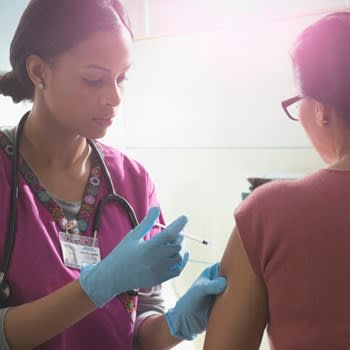The Side Effects of Shingles in the Elderly
- What are the side effects of shingles in the elderly? How do shingles happen? Let's discuss the answer to this and other relevant questions on the topic today.
Shingles is a virus that happens in three stages. The most notable stage is the eruption of a blister-like rash, often affecting only one side of the body. The rash usually appears in a stripe pattern down the side of the body but may be more widespread in severe shingles cases.
Before this telltale rash, older adults may notice intense tingling or pain. Then, an itchy rash develops that eventually turns into the blisters shingles are known for. The blisters typically erupt after about a week and scar over within a few weeks. However, shingles may take longer to scar over in some severe cases, and serious side effects can last past the scabbing.
While Original Medicare (Parts A and B) don't typically cover the shingles vaccine or Shingrix, many Medicare Part D Prescription Drug Plans and Medicare Advantage (Medicare Part C) plans with drug coverage cover the shingles vaccine.
But what are the side effects of shingles in the elderly and why do some people get shingles? You'll learn the answers to these questions below.

Learn More About Medicare
Join our email series to receive your free Medicare guide and the latest information about Medicare.
By clicking "Sign me up!" you are agreeing to receive emails from HelpAdvisor.com
Thanks for signing up!
Your free Medicare guide is on the way.
Make sure to check your spam folder if you don't see it.
What Triggers Shingles in Older Adults?
When you were a child, you might have had chickenpox. This is especially true for children born before 1995, when the chicken pox vaccine was first developed and began being distributed.
Chickenpox can happen to people of any age, but it's generally considered a "childhood illness." The illness causes a widespread rash of small blisters, fever, fatigue, headache and loss of appetite.
If you had chickenpox as a child, the shingles virus is already inside you. The virus causing chickenpox (varicella-zoster) will remain in your body forever but deactivates once you feel well. Shingles happens when this virus becomes reactivated. A shingles vaccine is available to reduce the risks of the virus reactivating
Although it isn't always possible to tell why the virus reactivated, any other serious illness causing a weakened immune system could be responsible. Because the immune system naturally weakens as you age, older adults are most at risk for developing shingles.
What Are the Side Effects of Shingles in the Elderly?
Not everyone with shingles will suffer long-lasting side effects, but many do. These side effects are often severe, and some may even be fatal. For example, shingles can cause toxic shock syndrome due to a bacterial infection, encephalitis (brain inflammation) and necrotizing fasciitis (a condition that destroys soft tissue). Bacterial infections can also result in scarring.
After a shingles outbreak, some older adults have new or worsening hearing and vision problems. Pain and tingling can cause a loss of sleep or depression, and the virus can lead to pneumonia in some rare instances.
Recent research has shown older adults who develop shingles are at an increased risk of stroke or heart attack. The risk of stroke is doubled in the week following a shingles outbreak. Heart attack risk also increases during this period but by a smaller margin than stroke.
How Long Do You Feel Unwell With Shingles?
Most shingles outbreaks last between 2 and 6 weeks. However, some older adults with compromised immune systems may have slower healing and be ill longer. All cases of shingles follow the same pattern, and understanding where you are in this pattern can help determine how much longer you'll feel unwell.
In the first stage of shingles, you may feel twinges of pain that worsen over 5-7 days. The pain may be dull and achy or sharp. Tingling and warm skin may accompany the pain and is generally restricted to a specific area or side of the body.
After a week or so, an itchy red rash develops in the same area where the pain was felt. During this stage, most people still feel pain, tingling, numbness and other types of discomfort.
Over the next 1-2 weeks, this rash will develop into blisters that then burst and scab over. You may have mild to moderate flu-like symptoms during this stage, including fever, headache and a general feeling of being unwell.
Recovery after the blisters scab varies significantly. Some people begin feeling better days after the last scab has formed, but others take weeks or even months to feel like themselves again. Those who develop serious side effects may have an even more prolonged recovery period.





